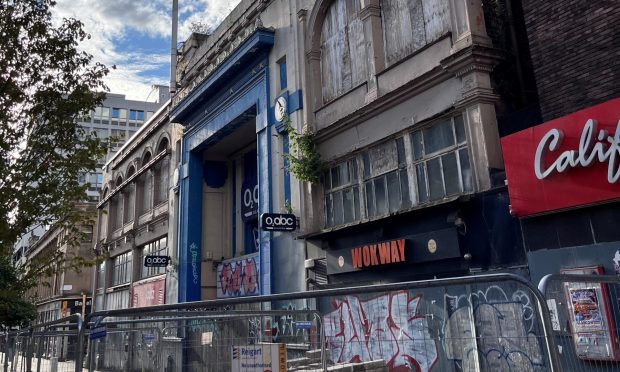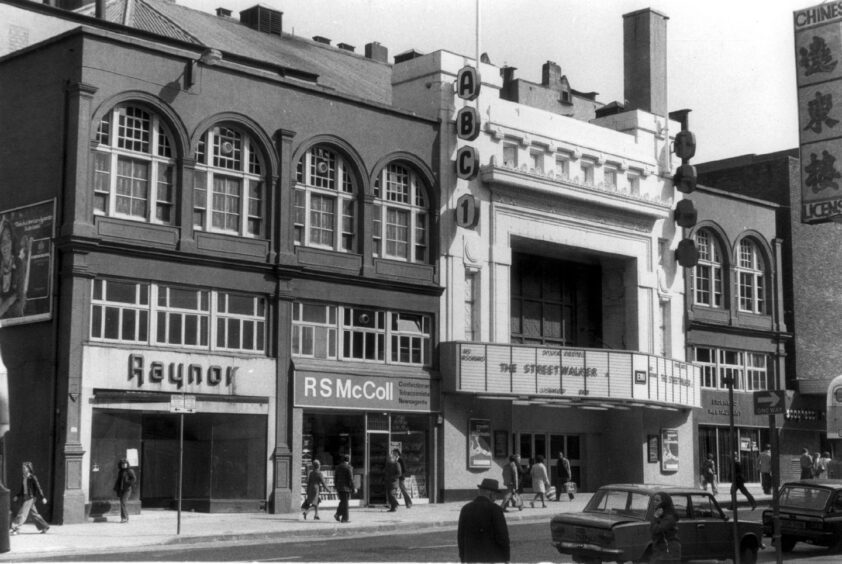
When flames tore through Glasgow School of Art, it was, everyone agrees, a terrible loss.
The blaze gutted the architectural masterwork of Charles Rennie Mackintosh for the second time in four years prompting disbelief across the city and around the world. The art school was a work of genius and its destruction – and enduring dereliction – diminishes our nation.
It was not the only building lost in the fire in 2018, however, but the quiet shuttering of the O2 ABC next door sparked no international concern, political hand-wringing or calls for a public inquiry. It should have.
Since it opened as the Diorama in 1875, the people of Scotland’s biggest city danced there, skated there, went to the circus there, watched movies there, enjoyed bands there, laughed there, cried there, and fell in love there.
Like many Glaswegians, they would have been vaguely aware of its illustrious neighbour, tucked behind Sauchiehall Street, up on the hill, but most had never seen the world famous art school never mind been inside.
Grizzled punks still remember The Clash pitching up unexpectedly one afternoon in the 1980s but the Mackintosh building – or the Mack, as those in charge valiantly tried to nickname it – did not touch the lives of most Glaswegians and, in truth, never tried to.
The late, great John Byrne, a creative genius and former student, was not alone in suggesting the school’s administrators had sold its soul long before what he called the “funeral pyre” of 2018.
By then, this global icon of refined design seemed increasingly distant from the teeming life of the city and, over time, had become a symbol of Glasgow for everyone but Glaswegians, like razor gangs and deep-fried Mars Bars.
Today, the charred ruins of the art school still lie in limbo but recently the developers and their wrecking crews moved in next door. The ABC, its spectacular fanned roof collapsed by the fire, could not be saved, apparently, and will become student flats and its famous façade torn down after welcoming the people of Glasgow for almost 150 years.
So a city loses its history and its people lose their memories. Some of the thousands, millions, of Glaswegians who, for generations, spent their happiest nights in the ABC might have described what its loss might mean to them but no one asked.
Ordinary people – the workers and families who made the city and whose children and grandchildren will make its future – were sidelined in silence.
Meanwhile, in Edinburgh, The People’s Story, in Canongate, a museum lauding the role of working people while charting the city’s social history, is currently closed because of financial pressures and faces an uncertain future.
GMB general secretary Gary Smith, born and raised in the city, wrote to councillors last week urging them to secure its future saying: “There are many museums and cultural venues in the city telling other stories, stories of kings and queens, the great and the good.
“One dedicated to the ordinary people of Edinburgh, the people this city has been built on, does not seem too much to ask.”
The contribution of working people to our society should be respected and celebrated. Their legacy protected, their voice raised loudly and heard clearly.
That voice is raised in places like The People’s Story. It resonates in places like the ABC.
We are told history is written by the victors but, too often, the only voices sounding down the centuries are those of the wealthy, powerful and privileged.
Their story is not the people’s story, however. That is something quite different. It demands to be told and deserves to be heard, today and tomorrow.
Louise Gilmour is GMB Scotland secretary

Enjoy the convenience of having The Sunday Post delivered as a digital ePaper straight to your smartphone, tablet or computer.
Subscribe for only £5.49 a month and enjoy all the benefits of the printed paper as a digital replica.
Subscribe
 © DC Thomson
© DC Thomson